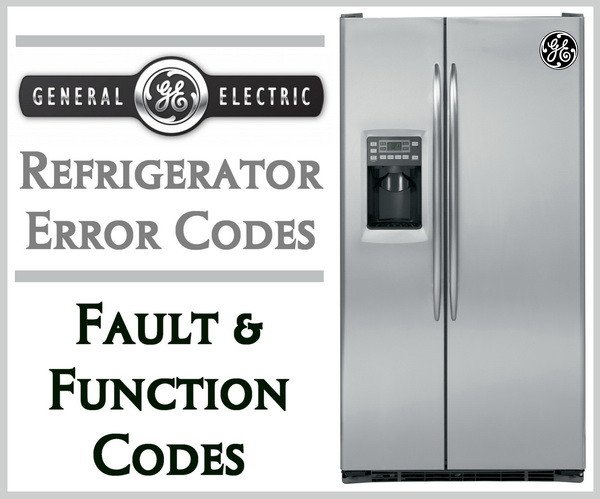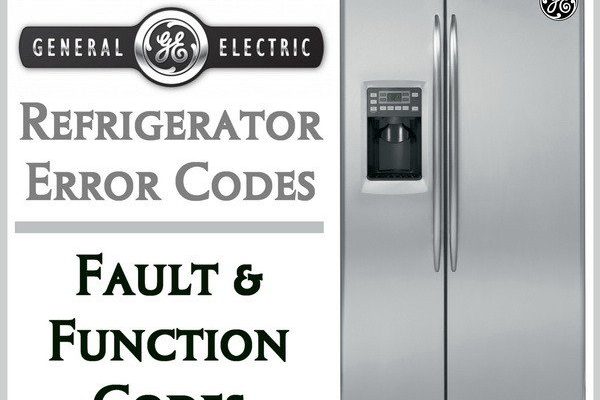
Understanding what this error code signifies can often be confusing, especially if you aren’t particularly tech-savvy. In the simplest terms, an error code like ‘SE’ usually indicates that your refrigerator is having a bit of a hiccup with its internal operations. Think of it as your fridge waving a tiny flag, saying, “Hey, something’s not quite right in here!” While it might feel alarming at first, the good news is that these signals are usually there to help you pinpoint the issue more easily—sort of like a built-in diagnostic tool.
Understanding the ‘SE’ Error Code
Now, let’s dive a little deeper into what the ‘SE’ error code actually means for your GE refrigerator. In many cases, ‘SE’ can stand for different things depending on the model of your appliance. Typically, it relates to a sensor error, which could mean the appliance is having trouble with how it’s reading the temperature. If you think of your fridge as a big, cold pantry, then the temperature sensor is like its thermostat, keeping everything chilled at the right level. If the sensor isn’t working correctly, it’s as if the thermostat in your house suddenly lost its mind and started to think it was a furnace.
This error might occur due to a few reasons— maybe the sensor itself is faulty, or there could be something obstructing it, like excessive frost or debris. Sometimes, it’s just a simple miscommunication between the electronic control board and the sensor. Whatever the root cause, it’s crucial to address this issue promptly to ensure your food stays fresh and your fridge runs efficiently.
Here’s the deal: while these sensors are crucial, fixing or diagnosing such issues might not always be a straightforward DIY fix. If mismanaged, it can lead to larger problems, like warmer fridge temperatures or even spoilage of precious groceries. Therefore, knowing whether your warranty covers this error can save not just money but also valuable time and stress.
The Coverage Question: Warranty Insights
So, you might be wondering, is this ‘SE’ error code something that your GE refrigerator warranty will cover? Most warranties provided by GE for their refrigerators typically cover defects in materials and workmanship—including things like sensors—during a specific warranty period, often one year from the date of purchase. This coverage can provide a much-needed safety net against unexpected repair costs.
However, not all issues are treated equally under warranty terms. If the problem with your refrigerator arises due to misuse, accidental damage, or routine wear and tear beyond the standard coverage period, then repairs might come out of your pocket. Think of a warranty as a kind of insurance policy; it’s there for unforeseen mishaps but not for damages from an all-night jam-packed fridge party leading to a broken shelf.
It’s essential to have a clear understanding of the warranty policy that applies to your specific GE refrigerator model. The best way to determine if the error is covered under warranty is to check the original purchase documentation or contact GE’s customer service with your model and serial number. This verification can prevent surprises, ensuring you’re prepared for either a convenient repair or potential costs.
Next Steps for Handling the Error Code
Now that you’ve got a grip on what the ‘SE’ error means and what to consider regarding warranty coverage, what should you do next? Firstly, try to reset your refrigerator by unplugging it for a few minutes and then plugging it back in. Much like rebooting a sluggish computer, this can sometimes resolve electronic quirks. If the error persists, it might be time to reach out for professional help.
Contact GE’s customer service to get advice tailored to your model. They can guide you through potential fixes over the phone or schedule a technician visit if necessary. If your refrigerator is still under warranty, make sure to confirm the details—this could mean the difference between a covered repair and an unexpected bill.
Lastly, preventing future errors is always a smart move. Regular maintenance, like cleaning coils and ensuring proper ventilation, can keep your refrigerator running smoothly. Routine checks can help avoid error codes from escalating into larger issues—kind of like catching a cold before it turns into the flu.
In the end, while error codes might seem intimidating, they often serve as helpful guides in maintaining the efficiency and longevity of your refrigerator. With the right steps and knowledge about your warranty, you can navigate these technical hiccups smoothly and continue enjoying fresh food with peace of mind.
